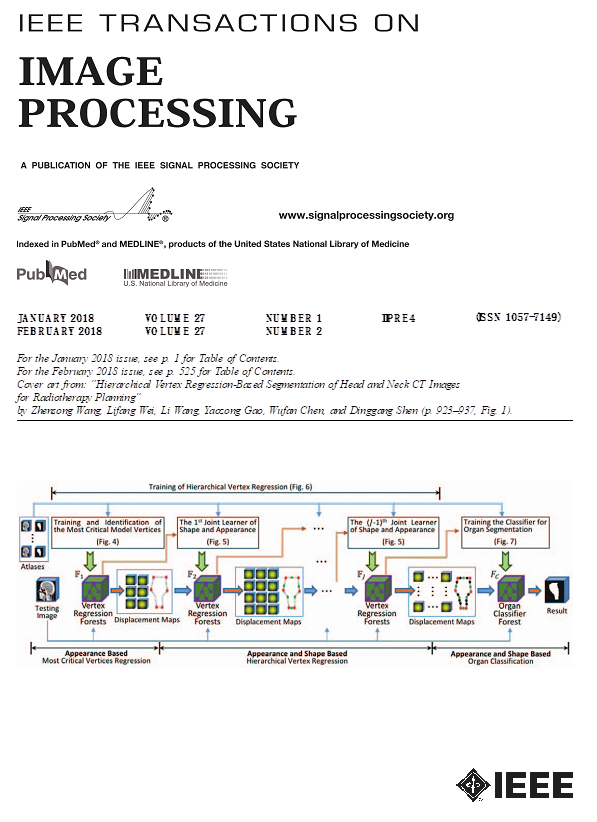Cross-Domain Few-Shot Remote Sensing Object Classification via Triplet Relation-Aware Metric.
IF 13.7
1区 计算机科学
Q1 COMPUTER SCIENCE, ARTIFICIAL INTELLIGENCE
引用次数: 0
Abstract
In real-world scenarios, peculiar remote sensing categories are difficult to collect on account of high cost and technical requirements. Moreover, there exists domain distribution gap among different datasets. Existing methods leverage inter-class and intra-class relations to enhance feature representation. Since remote images are shot from top to bottom, there is little difference between classes. Thus, such distance constraint only forms decision boundary between different classes. This paper proposes a triplet relation-aware metric for cross-domain few-shot remote sensing object classification, where the triplet relation-aware metric adjusts the distances among three kinds of inter-instance relations (i.e., same instance, same class and different class relations) to obtain a precise and effective feature representation. Especially, the distance of the same instance is regarded as a distance coordinate origin to guide distance metric learning. In this way, we constitute richer feature relations to promote representation learning in the source domain. Concretely, this procedure is optimized by the supervision of the designed relation-aware soft label based on the distance coordinate origin. Then, we align the triplet relation-aware metric between source domain and pseudo domain generated by the proposed episode style adversarial attack, thereby obtaining a domain-invariant feature representation. Extensive experiments on five widely-used remote sensing datasets demonstrate the superior performance of the proposed method compared with the state of the arts. Code is available at: https://github.com/jackhdpbl/TRAM.基于三元关系感知度量的跨域少拍遥感目标分类。
在实际情况下,由于成本高和技术要求高,难以收集特殊的遥感类别。此外,不同数据集之间还存在领域分布差距。现有的方法利用类间和类内关系来增强特征表示。由于远程图像是从上到下拍摄的,所以类之间几乎没有区别。因此,这种距离约束只是形成了不同类之间的决策边界。本文提出了一种用于跨域少拍遥感目标分类的三元关系感知度量,该三元关系感知度量通过调整三种实例间关系(即同一实例、同一类和不同类关系)之间的距离来获得精确有效的特征表示。特别是将同一实例的距离作为距离坐标原点,指导距离度量学习。通过这种方式,我们构建了更丰富的特征关系来促进源域的表示学习。具体来说,通过基于距离坐标原点的关系感知软标签的监督,优化了该过程。然后,我们将本文提出的情节式对抗性攻击生成的源域和伪域之间的三元关系感知度量对齐,从而获得域不变的特征表示。在五个广泛使用的遥感数据集上进行的大量实验表明,与现有方法相比,所提出的方法具有优越的性能。代码可从https://github.com/jackhdpbl/TRAM获得。
本文章由计算机程序翻译,如有差异,请以英文原文为准。
求助全文
约1分钟内获得全文
求助全文
来源期刊

IEEE Transactions on Image Processing
工程技术-工程:电子与电气
CiteScore
20.90
自引率
6.60%
发文量
774
审稿时长
7.6 months
期刊介绍:
The IEEE Transactions on Image Processing delves into groundbreaking theories, algorithms, and structures concerning the generation, acquisition, manipulation, transmission, scrutiny, and presentation of images, video, and multidimensional signals across diverse applications. Topics span mathematical, statistical, and perceptual aspects, encompassing modeling, representation, formation, coding, filtering, enhancement, restoration, rendering, halftoning, search, and analysis of images, video, and multidimensional signals. Pertinent applications range from image and video communications to electronic imaging, biomedical imaging, image and video systems, and remote sensing.
 求助内容:
求助内容: 应助结果提醒方式:
应助结果提醒方式:


